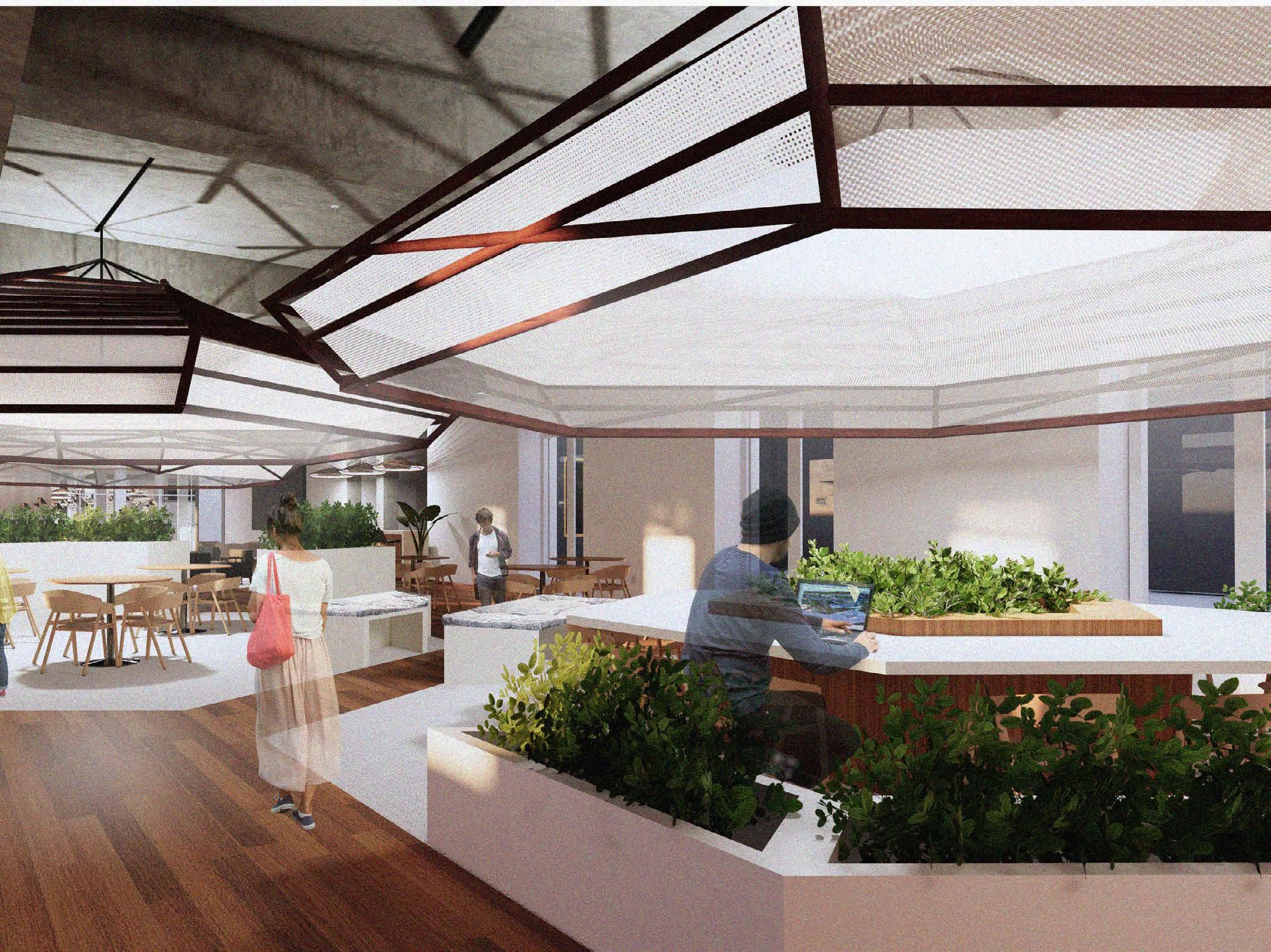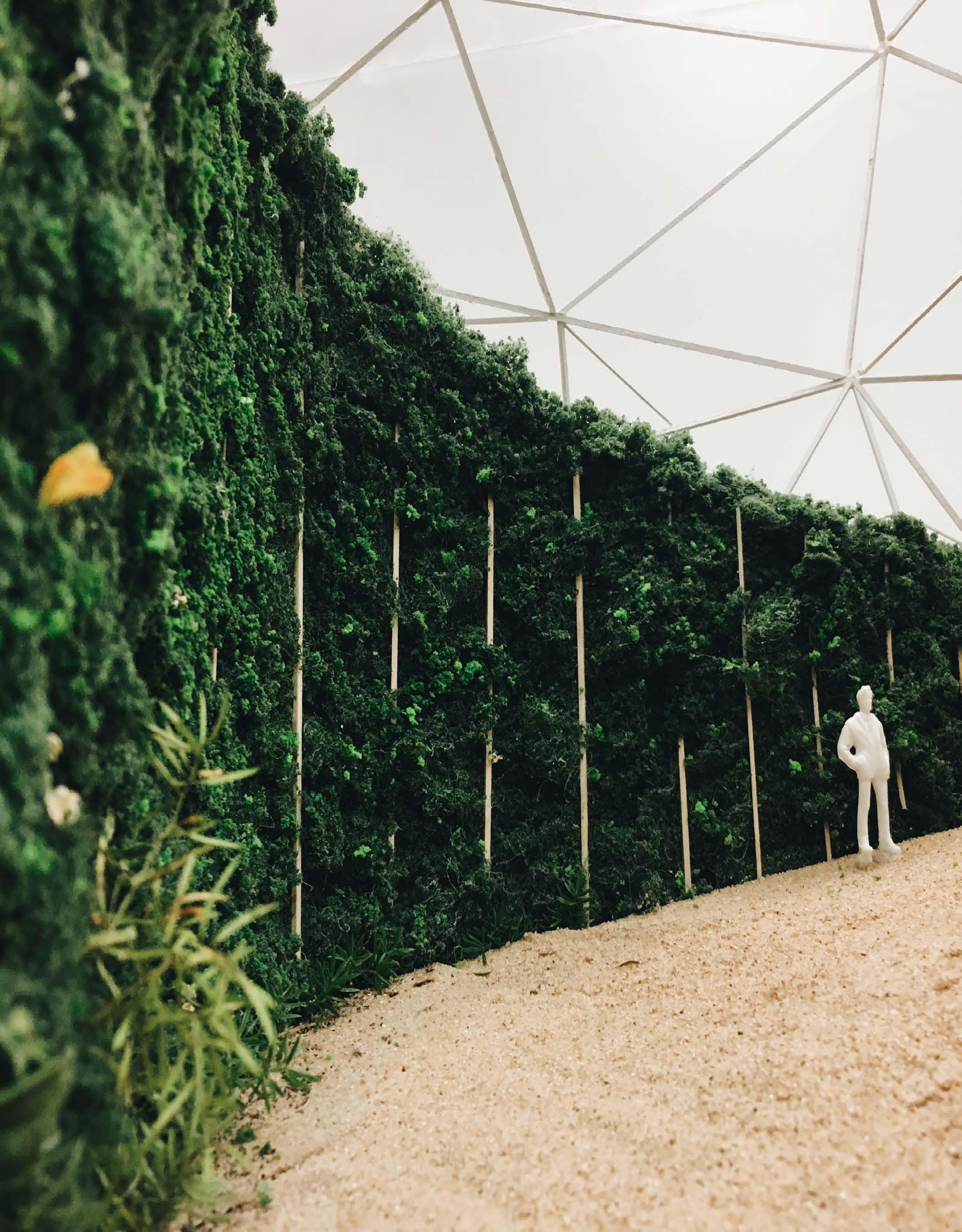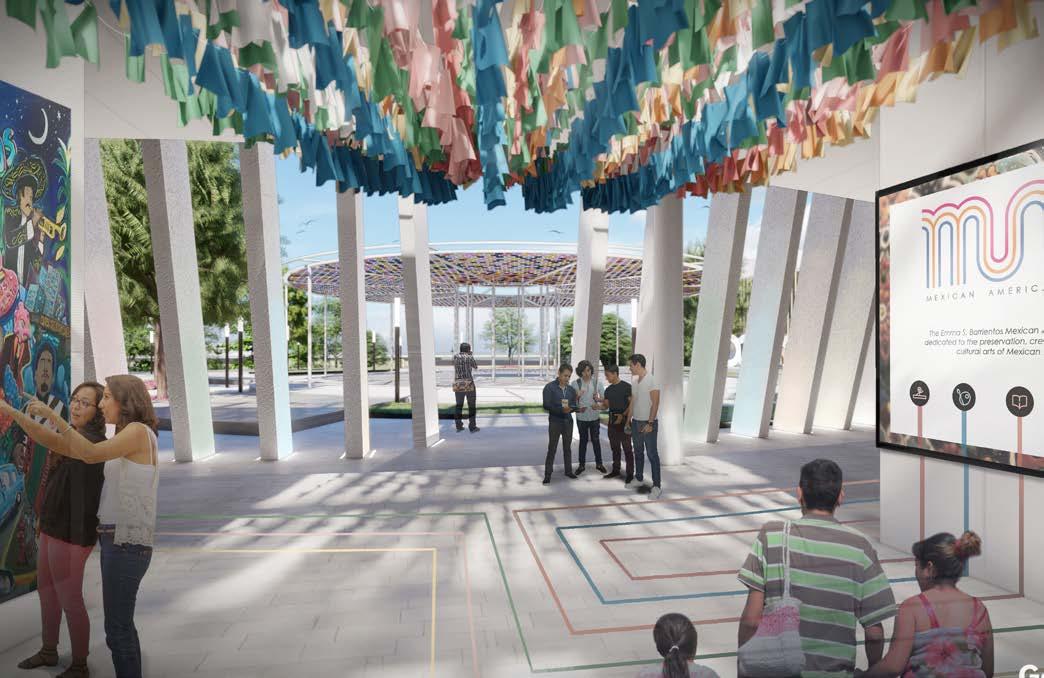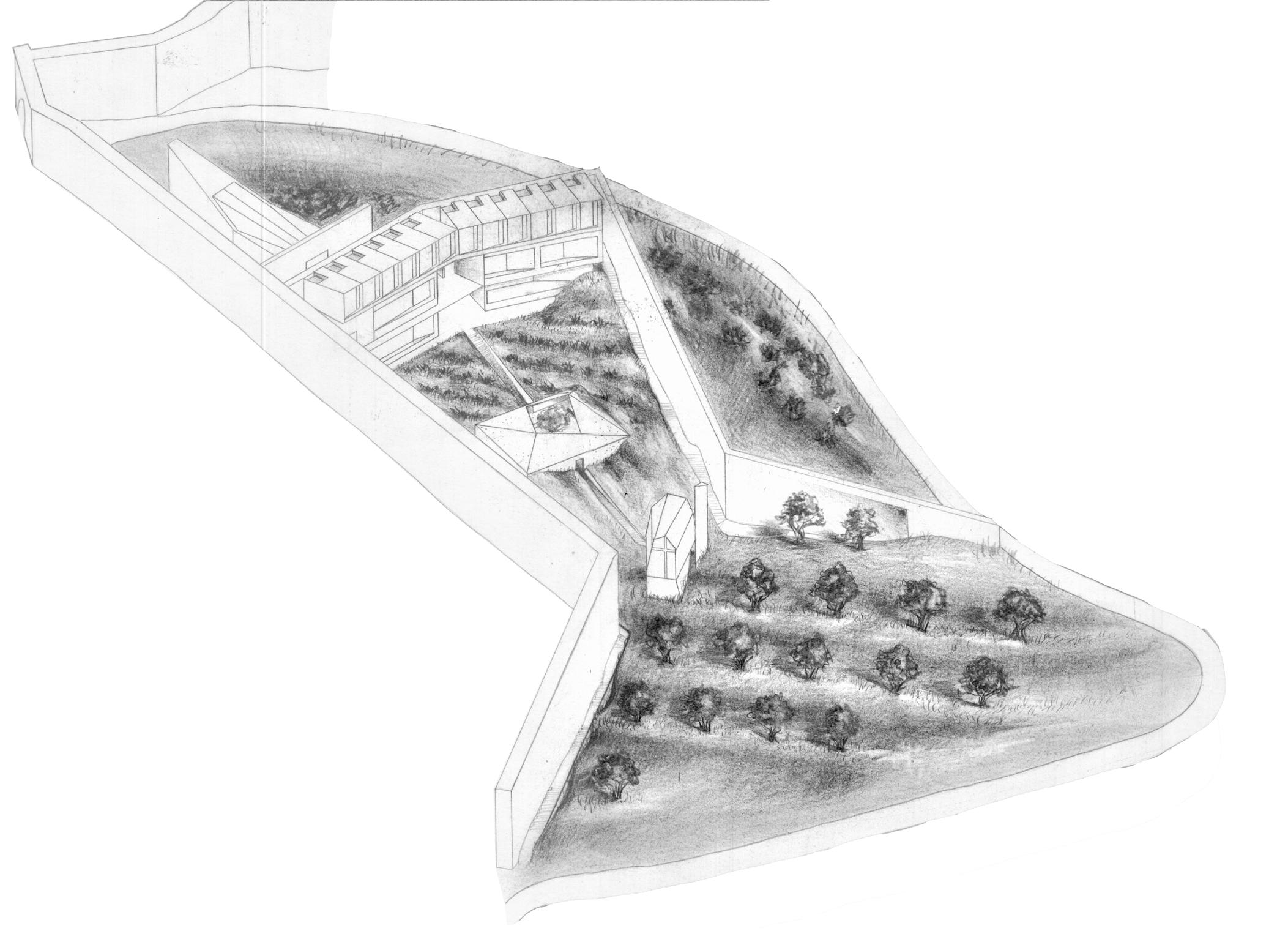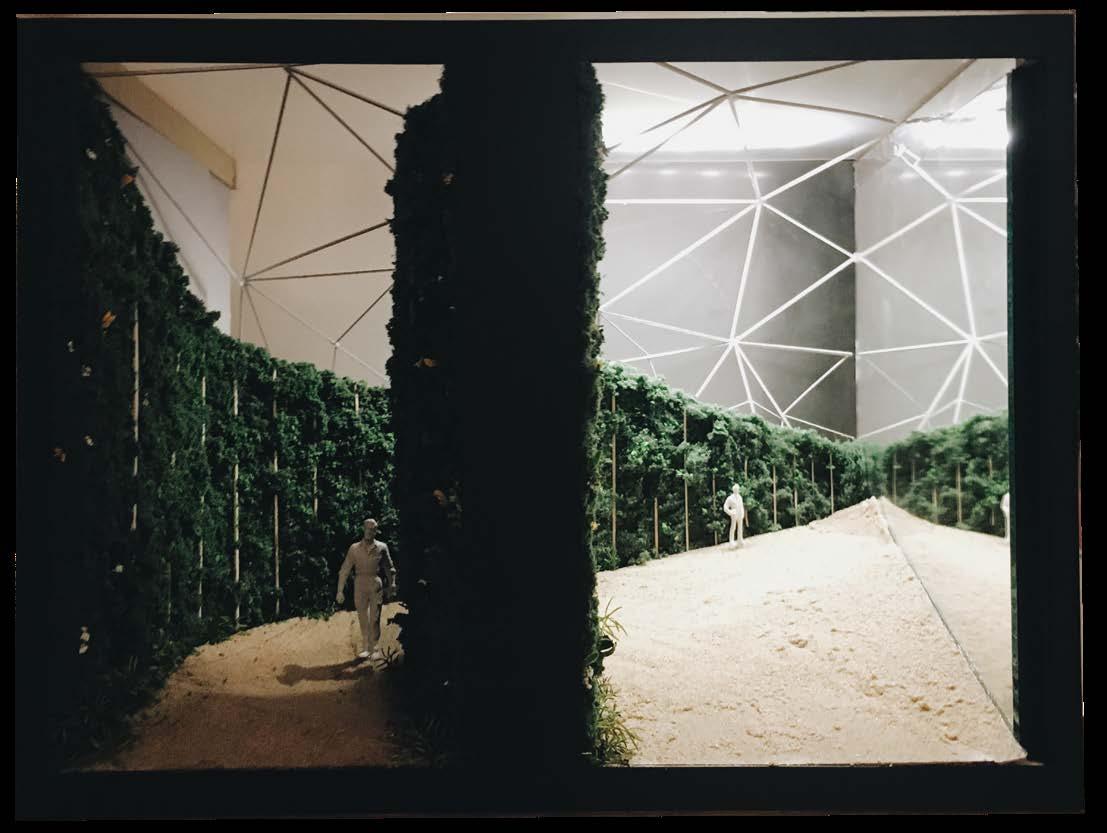
11 minute read
BUG FILTER + WINDOW INTERVENTION ADV ARCH STUDIO: BUG NEREA FELIZ / SPRING 2020
PROGRAM & CONCEPT
Francescan monks are focused on the aspects of humility, of enduring hardship to become closer with God, and of coupling their private life with public service. In addition, the centuries-old buildings of Cortona inspired us to maintain the tradition of building small spaces whilst tackling a large scale site. The program includes 12 monk cells, a refectory, a library, an abbot’s office, a chapel, a church, and a cloister.
Advertisement
The hill is characterized by steep terraces which are decorated with rows of olive trees, a feature we kept and used further for shading, agricultural harvest, and visual aesthetics.



We began first with brainstorming the design of the monks’ living quarters. Upon entry, a narrow pathway leads straight ahead to a large window that spans from floor to ceiling. The washroom and bedroom area are reserved for the right side and located opposite from one another, effectively gathering the morning sunlight that illuminates the spaces through the clerestory that recesses below an upward sloping roof. The window lets in light and provides a view out to the rest of the city’s landscape, including sights of neighboring areas like Casitglion Fiorentino and Perugia.


A key feature of the design is the addition of a second wall that mirrors the existing one. It effectively shields the living quarters from the public, and it both visually and symbolically funnels the focus towards the pinching point, where the chapel is placed.


The materials chosen to be used are all of locally sourced inventory to not only reduce carbon footprint but to also maintain a relatable dialogue between the existing site’s border wall and the new monastery.



The cloister solidifies an axial organization that not only reinforces the objective of visual focus towards the pinching point but also requires the physical journey of ascending and descending. These pathways trail through the center and also hug the existing wall within its perimeter.

Entering from the living cells, the monks descend into a cloister that cuts into the earth, utilizing the natural terraces to provide threshold transition, shading, and cooling. The form of the structure is made of concrete traingular slabs that angle inwards, letting in sunlight at various angles.






The materials chosen to be used are all of locally sourced inventory to not only reduce carbon footprint but to also maintain a relatable dialogue between the existing site’s border wall and the new monastery.







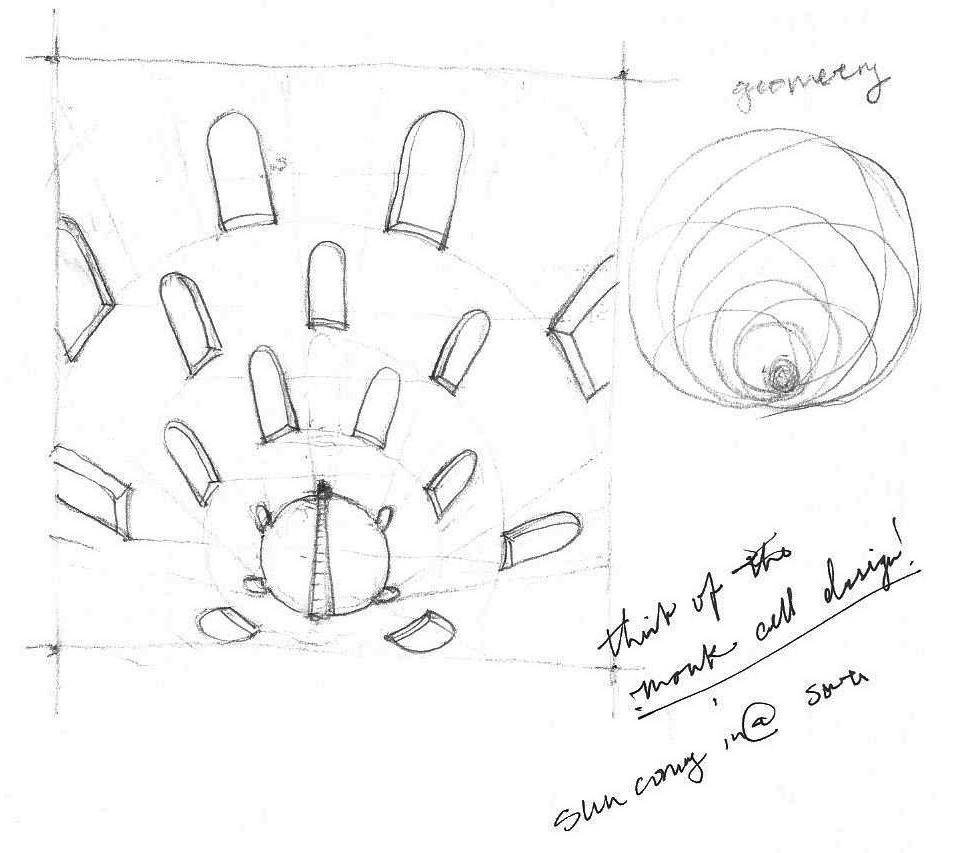


BUG FILTER + WINDOW INTERVENTION
ADV ARCH STUDIO: BUG FILTER NEREA FELIZ / SPRING 2020
The Bug Filter Studio seeks to celebrate the underacknowledged world of insects through a two-fold process that involves first creating a physical filter/art piece, followed by the intervention of a studio classroom window. As a studio, we individually conducted our own research and compiled our findings, which helped inform how we each wanted to design our filters. For Phase II, my team and I’s intervention is titled MICROLENS because we wanted to create a relaxing space for students that also encourages an up-close view of the insect micro world. To accomplish this, we designed a habitat of wooden tubes for solitary bees and other insects, arranging them in an abstracted pattern of the courtyard’s popular Chinese Magnolias.


* Part IV assigned and completed in the last two and a half weeks of studio - during the COVID-19 quarantine.
Team members for Phase II: Hannah Harden, Anna Henry
The first segment of the project began by assigning each student a specific local insect to research and draw. We all conducted research on the bugs’ vision acuity, their habitat preferences, their body color, pattern and symmetry, wavelength detections, and population data. After compiling and becoming familiar with the comprehensive data, we each selected artwork precedents that helped us create our own filters that communicated aspects of our research.
For my filter, I catered to the Pipevine Swallowtail Butterfly. Butterflies’ vision is not as clear as humans’, but they compensate for this lack of resolution clarity with their sensitive detection of color variance and keen perception of movement.
The pattern of the filter experiments with such effects: - varying perceptions of shifting depth and focus, achieved by high and low densities of circles and ovalls that evoke pixelation. Also plays into how butterflies can see almost completely around themselves due to the sheer size and location of their eyes in comparison to the rest of their heads. They can see approximately 314 degrees around themselves. - an optical illusion of image blur and movement along contours of the orbs interpreted as concave or convex projections.

The layering of acrylic experiments with such effects: - overlays show the wide variance of colors that butterflies can see. Detectable wavelengths range from Red (in Visible Light) to Ultraviolet (demonstrated with black light). - underlying, subtle patterns that resemble the detection of flower patterns, nectar inventories, and UV bands on other butterflies’ wings (fluorescent edges of acrylic).


Before the COVID-19 quarantine hit, our studio was scheduled to display all of our filters at Austin’s annual Fusebox Festival. We created steel foundations (with the help of steel welder workers at the school’s woodshop) from which the filters suspend from. In addition, we manufactured inhouse hempcrete seats -- all of which make up a complete installation.

Unfortunately, we could not follow through with our plan of publically presenting our work. Instead, alternate assignments were set to take place.

The next step was to create a stopmotion animation that showed how people would have interacted with our filters. The video along with our process of steel welding and hempcrete seat creation was uploaded to Fusebox Live, the virtual platform that Fusebox shifted to in the wake of the pandemic.



PART III: GRAPHIC FILTER VIDEO


Next, we abstracted our physical filter to create an image to overlay a video shot and sent to us by Nerea. These images were then compiled in a looped video where all of our graphic filters transitioned in one by one.

Fusebox streamed this video on their live platform, and we were published by the Austin Chronicle as well!
The last segment of the semester focused on reinventing the windows in the 3rd floor studios of Goldsmith Hall.
Our intervention is titled MICROLENS because we wanted to create a relaxing space for students that also encourages an up-close view of the insect micro world. To accomplish this, we designed a habitat of wooden tubes for solitary bees and other insects, arranging them in an abstracted pattern of the courtyard’s celebrated Chinese Magnolias. These habitats are surrounded and paired with iridescent acrylic tubes to produce an intriguing and provocative effect within the studio. The installation is intentionally designed to allow student personalization in the replacement of its parts, as the whole installation can be built using the school’s material and printing equipment. Over time students are encouraged to explore with different materials to create their own unique tube inserts. Paired with our window installation is a relaxing seat that reflects the design of the abstracted window pattern. Overall, our goals aim to bring closer two worlds that have grown apart




The video hyperlink shows the abstraction of the Chinese Magnolias through Grasshopper’s image sampler to create the final pattern. We took inspiration from these trees to create a similar design that not only echoes the courtyard’s vegetation, but also pays respect to the existing facade of Goldsmith. The specific pair of windows we chose to intervene are located in the corner of the classroom, behind the blossoms. Here, the sun washes the adjacent walls with light. This space is more reserved, perfect for leisure and sightseeing.



Many solitary bees are ground-nesters, but the remaining solitary bees nest in existing cavities of dead wood or chew their own cavities into woody material. The living cavities are inspired by traditional insect hotels.


Hollow Cylindrical Tube
The blue dots are the hollow iridescent acrylic tubes that have a wooden insert where bees can nest, and the pink dots are solid iridescent acrylic tubes that create a calming visual effect using sunlight from outside the studio.

Transparent Protective Casing






Walnut 2-Way Mirror
Bamboo Iridescent Layers


Oak Amber Acrylic / 3D Print











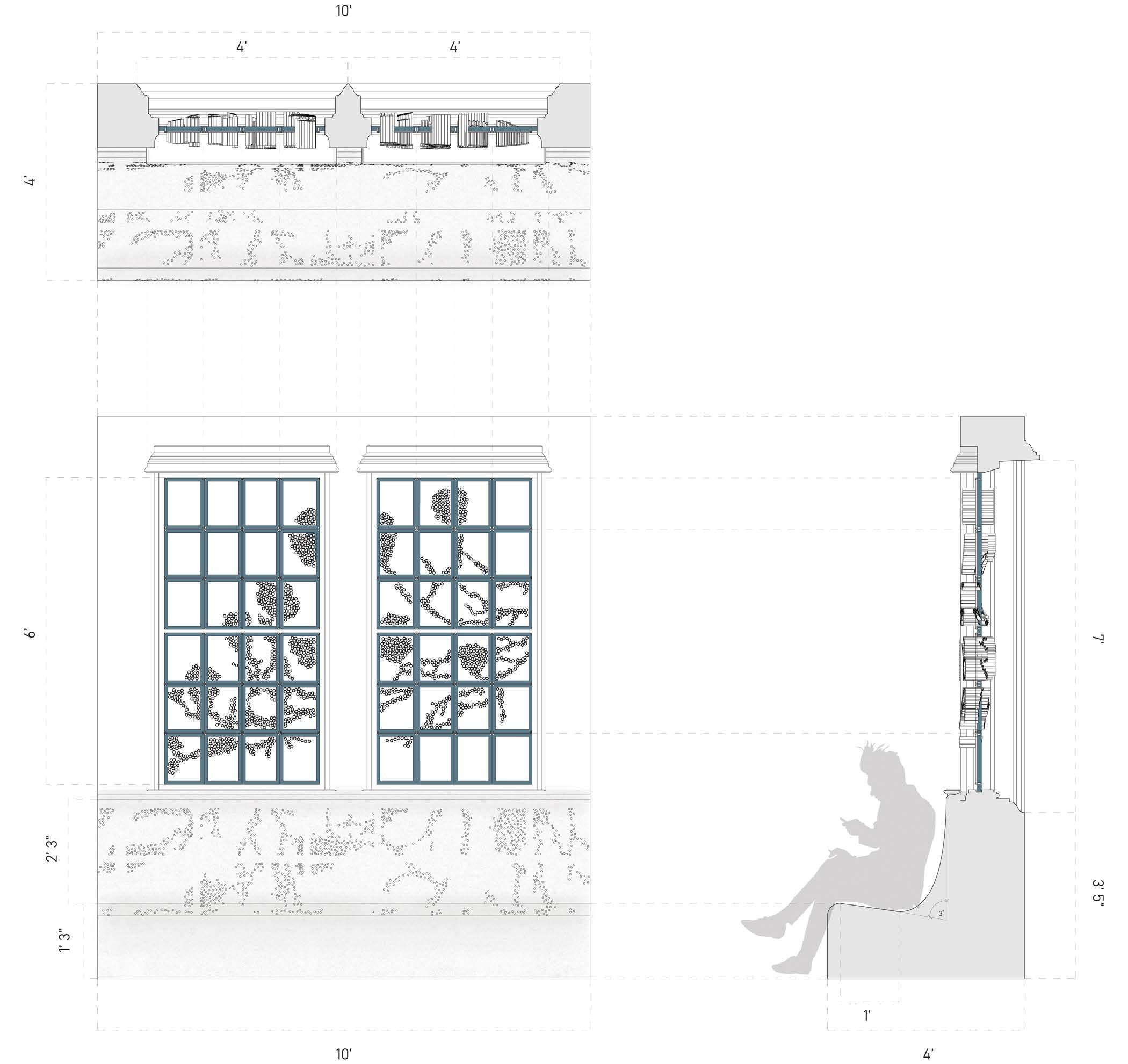


Concrete Mold

L I S A Y A N G
P O R T F O L I O I N T E R I O R D E S I G N
F ‘ 1 6 - S ‘ 20

